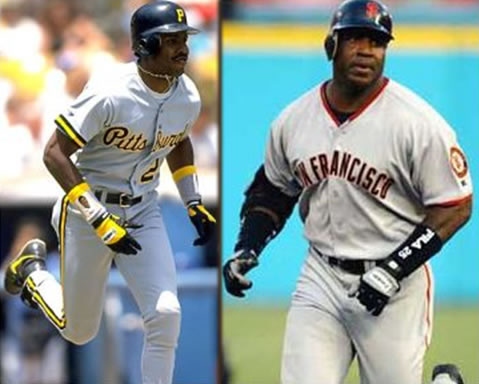
Futures contracts can lock in current prices of assets at a fixed price at a set date in the future. Futures contracts derive their value from underlying assets, either commodities such as gold, gains, what, or oil, or financial securities like stocks or bonds. Moreover, futures contracts enable traders to speculate in which direction the prices of the underlying assets go and open either a short or long position.
The value of the contract is derived from the value of the underlying asset, making futures a form of derivatives. When considering futures trading, you must first familiarize yourself with all its processes, including transaction fees, leverage, and obligations. It is also essential to go with a trusted broker and get acquainted with various underlying assets of futures contracts. Due to the highly liquid nature of futures markets, traders can quickly move in and out of their open positions. Selling a futures contract can also be relatively easier than short-selling stocks.
Premium Investing Services
Trading the different futures markets can be very rewarding but also very challenging. For young investors, there are many different markets and strategies that you can use to be successful, including the ones we discussed here. By doing your research and making sure you understand how futures work, you will have the opportunity to enjoy a great deal of success trading in the futures market. Getting started in the different futures markets can seem daunting. One way that you can learn as you go without putting any of your money at risk is to start out paper trading.
If the price of oil moves against the trade, it can mean losses that far exceed the account’s $5,000 initial margin amount. In this case, the broker would make a margin call requiring that additional funds be deposited to cover the market losses. The difference between the prices would be cash-settled in the investor’s brokerage account, and no physical product would change hands. However, the trader could also lose if the commodity’s price was lower than the purchase price specified in the futures contract. Underlying assets include physical commodities and financial instruments. Futures contracts detail the quantity of the underlying asset and are standardized to facilitate trading on a futures exchange.
Risk Disclosure
Futures contracts, or simply “futures,” are traded on futures exchanges like the CME Group and require a brokerage account that’s approved to trade futures. The buyer of a futures contract, on the other hand, is obligated to take possession of the underlying commodity (or the financial equivalent) at the time of expiration and not any time before. The buyer of a futures contract can sell their position at any time before expiration and be free of their obligation. In this way, buyers of both options and futures contracts benefit from a leverage holder’s position closing before the expiration date.
To lock in the current higher price, he enters a futures contract that guarantees the same price for that period. Large corporations can use futures as a hedge against the underlying asset’s price movements, where 7 marketing function the aim is to prevent losses from rising prices. In most cases, these companies need large amounts of specific commodities in their production or manufacturing process to make their products or to operate.

Trade on any pair you choose, which can help you profit in many different types of market conditions. So, if gold is trading for about $2,000 per ounce, each futures contract is $200,000 in value. Oil is measured in barrels, which are about 42 gallons, and each futures contract is for 100 barrels. Corn is measured in bushels, which weigh approximately 56 pounds, and futures contracts are standardized to 5,000 bushels.
Futures trading is not suitable for every investor due to its complexity and risk. Index futures are available for the Dow Jones Industrial Average (DJIA) and the Nasdaq 100 along with e-mini Dow (YM) and e-mini NASDAQ 100 (NQ) contracts. Index futures are also available for foreign markets including the German, Frankfurt Exchange-traded (DAX)—which is similar to the Dow Jones—the SMI index in Europe, and the Hang Seng Index (HSI) in Hong Kong.
Start investing today
In addition, the daily futures-settlement failure risk is borne by an exchange, rather than an individual party, further limiting credit risk in futures. A forward is like a futures in that it specifies the exchange of goods for a specified price at a specified future date. However, a forward is not traded on an exchange and thus does not have the interim partial payments due to marking to market.
The front month is the month where the majority of the trading volume and liquidity occurs. It is also the month that is usually referred to when one talks about the price of the commodity. There is no standard for the definition of what the front month is. However, the front month is usually a nearby month and changes or “rolls” a few times a year.
- For example, a trader could go long S&P futures and short NASDAQ futures if they think the S&P is undervalued next to the NASDAQ.
- It’s a financial instrument-also known as a derivative-that is a contract between two parties that agree to transact a security or commodity at a fixed price at a set date in the future.
- Forwards have credit risk, but futures do not because a clearing house guarantees against default risk by taking both sides of the trade and marking to market their positions every night.
- Get this delivered to your inbox, and more info about our products and services.
Trade some of the most liquid contracts, in some of the world’s largest markets. Meanwhile, if an investor owns a put option to sell XYZ at $100, and XYZ’s price falls to $80 before the option expires, the investor will gain $20 per share, minus the cost of the premium. If the price of XYZ is above $100 at expiration, the option is worthless and the investor https://1investing.in/ loses the premium paid upfront. The first two characters identify the contract type, the third character identifies the month and the last two characters identify the year. A good way to start is by concentrating on these four different areas. This will help build your knowledge as you go along without increasing your overall amount of risk.
The Difference between Futures and Other Tradable Assets
Once you’ve made your first futures trade, you can rinse and repeat, hopefully with great success. If you own a farm, for example, and you grow corn, you may want to lock in a price for your corn before it’s time to harvest. That can guarantee a certain level of income for the year, and there won’t be any surprises if the price of corn tanks.
At the same time, the exchange will enable consumers or buyers of those underlying commodities the certainty of the price they will pay, at a defined time in the future. Forwards have credit risk, but futures do not because a clearing house guarantees against default risk by taking both sides of the trade and marking to market their positions every night. Forwards are basically unregulated, while futures contracts are regulated at the central government level.
For example, the stock price for a company like Exxon Mobile (XOM) will at times be dependent upon the price of crude oil because of the nature of the company — and other factors like management and competitors. A futures contract on the other hand can be based directly on the price of crude oil without the added risk factors that a company may bring. That does not mean however that futures contracts are less risky; they are still highly complex financial instruments. For example, profits in the airline industry can be heavily dependent on the price of fuel. To protect against a sudden surge in prices, an airline company can use a futures contract to lock in current prices, thus nullifying the impact of increasing fuel prices. For traders, the settlement is in cash, while some businesses may opt for physical delivery.
Binance.US CEO Exits, 33% of Staff Laid Off – Investopedia
Binance.US CEO Exits, 33% of Staff Laid Off.
Posted: Wed, 13 Sep 2023 15:01:13 GMT [source]
Futures contracts aren’t issued by the owner of the underlying asset like a company issues stock. Instead, futures are agreements drawn up between 2 individual parties betting on the direction of a price of the underlying asset. The profit or loss of the position fluctuates in the account as the price of the futures contract moves. If the loss gets too big, the broker will ask the trader to deposit more money to cover the loss. They may use futures contracts to lock in a price they will sell at, and then deliver the oil to the buyer when the futures contract expires.
Speculators are individual investors who want to benefit from the underlying asset’s price movements and don’t want to receive the physical assets. Their only interest is to earn a profit from trying to predict the price changes, which is why they close their positions before the futures contracts expire. Futures—also called futures contracts—allow traders to lock in the price of the underlying asset or commodity. These contracts have expiration dates and set prices that are known upfront.
Those who are allowed access to the exchange are brokers and commercial traders who are members of the exchange. Members need to be registered with the National Futures Association (NFA) and the Commodity Futures Trading Commission (CFTC). Individuals who want to trade futures contracts must do so by establishing an account with a registered broker.
Expiry (or Expiration in the U.S.) is the time and the day that a particular delivery month of a futures contract stops trading, as well as the final settlement price for that contract. For many equity index futures and interest rate futures as well as for most equity (index) options, this happens on the third Friday of certain trading months. On this day the back month futures contract becomes the front-month futures contract. For example, for most CME and CBOT contracts, at the expiration of the December contract, the March futures become the nearest contract.
S&P 500, Two-Year T-Note, Gold, Crude Oil, and British Pound … – tastylive
S&P 500, Two-Year T-Note, Gold, Crude Oil, and British Pound ….
Posted: Wed, 13 Sep 2023 14:30:10 GMT [source]
If the price of gold in the market falls below the contract price the buyer agreed to, the futures buyer is still obligated to pay the seller the higher contract price on the delivery date. Again, this differs from futures which get ‘trued-up’ typically daily by a comparison of the market value of the futures to the collateral securing the contract to keep it in line with the brokerage margin requirements. Clearing margin are financial safeguards to ensure that companies or corporations perform on their customers’ open futures and options contracts. Clearing margins are distinct from customer margins that individual buyers and sellers of futures and options contracts are required to deposit with brokers.
Because it derives its value from the value of the underlying asset, a futures contract is a derivative. Index futures are a way to get into a passive indexed strategy, by owning the entire index in a single contract, and with greater leverage than an ETF would provide. Both the New York Stock Exchange (NYSE) and Financial Industry Regulatory Authority, Inc. (FINRA) require a minimum of 25% of the total trade value as the minimum account balance. However, some brokerages will demand greater than this 25% margin.
Understanding futures
Our partners cannot pay us to guarantee favorable reviews of their products or services. Futures tied to the S&P 500 and Nasdaq 100 futures ticked up 0.04% each. Inflows into ETFs overall were weak, coming in at $15 billion in August, the firm found. U.S. equity ETFs brought in $6 billion as the S&P 500 limped through the month with a roughly 1.8% loss. Exports in July fell 1.2% year-on-year, a reversal from the 0.9% growth in June. Imports to the country however, plunged 15.3% year-on-year in July, a steeper fall from the 15.0% contraction the previous month.

“All that said, this isn’t about a call on the quarter,” Moskowitz added. “ADBE remains very well-positioned to benefit from digital transformation with its highly comprehensive end-to-end offering.” Sweep functionality and global buying power applies to cryptocurrency products. Get stock recommendations, portfolio guidance, and more from The Motley Fool’s premium services. Volatility profiles based on trailing-three-year calculations of the standard deviation of service investment returns.
